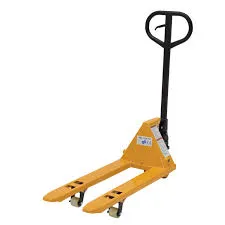


The Advantages and Applications of Small Electric Hoists
In the world of material handling and lifting, small electric hoists have emerged as indispensable tools for various industries. These compact and versatile devices are designed to lift heavy loads with ease, making them an excellent choice for professionals and DIY enthusiasts alike.
What is a Small Electric Hoist?
A small electric hoist is a type of lifting equipment that uses electric power to lift and lower heavy items. It typically consists of a motor, lift mechanism, and a hook or other attachment points for securing loads. These hoists come in various capacities, ranging from a few hundred pounds to several tons, allowing them to handle a wide array of lifting tasks effectively.
Key Features
1. Compact Design One of the standout features of small electric hoists is their compact design, which makes them easy to transport and maneuver in tight spaces. This is particularly beneficial in warehouses, construction sites, or within smaller workshops.
2. Efficiency Electric hoists operate quickly and efficiently compared to manual hoisting methods. They significantly reduce the time and effort required to lift heavy objects, improving overall productivity.
3. Safety Safety is a paramount concern in any lifting operation. Small electric hoists are designed with safety features, such as automatic shut-off mechanisms and overload protection, to prevent accidents. Additionally, many models include remote control options, allowing operators to maintain a safe distance from heavy loads during lifting.
4. Ease of Use Operating a small electric hoist is straightforward, requiring minimal training. Most hoists feature simple controls that allow users to lift and lower loads smoothly without the need for complex maneuvers.

Applications
Small electric hoists have a multitude of applications across various sectors
- Construction In construction, these hoists are invaluable for lifting materials such as steel beams, concrete blocks, and heavy machinery. Their ability to function in confined spaces makes them ideal for smaller sites.
- Manufacturing Many manufacturing facilities employ small electric hoists to streamline the assembly process. They can move heavy components from one station to another, reducing the strain on workers and increasing throughput.
- Warehouse Operations In warehouses, small electric hoists can assist in the stacking and retrieval of goods. They simplify the process of loading and unloading pallets, making them essential for efficient inventory management.
- Automotive Repair Mechanics often use electric hoists to lift car engines or other heavy components during repairs. Their ability to lift substantial weights with minimal effort ensures that mechanics can perform repairs safely and efficiently.
- Home Improvement For DIY enthusiasts, small electric hoists can be useful for various home projects, from lifting heavy furniture and appliances to assisting in the installation of ceiling fixtures.
Conclusion
In conclusion, small electric hoists are versatile, efficient, and safe tools that significantly enhance the lifting capabilities in numerous applications. Their compact design, ease of use, and safety features make them an excellent choice for both professional and personal use. As industries continue to seek ways to improve efficiency and safety in lifting operations, the demand for small electric hoists is likely to grow, solidifying their role as essential equipment in today's material handling landscape. Whether for construction, manufacturing, or home improvement projects, small electric hoists represent the future of lifting technology.



